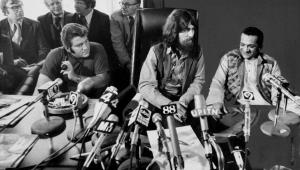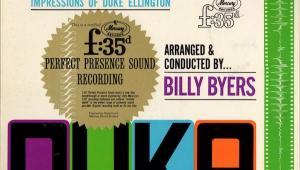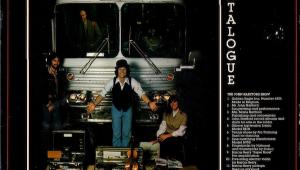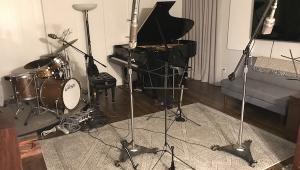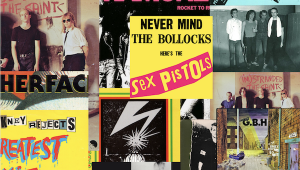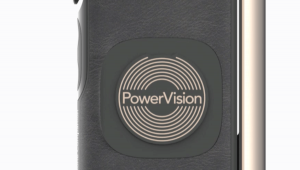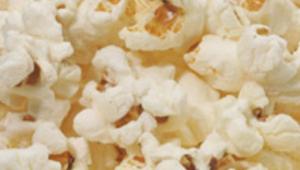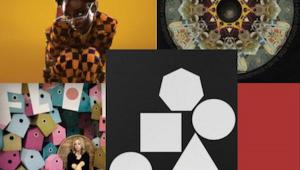Kinks Remastered to SACD: The Inside Story

Back in 1998 KOCH licensed both the RCA and Arista Kinks catalogs from BMG. Ray Davies supervised and approved the transfer from two-track analog masters, which was accomplished using an Ampex ATR102 directly feeding a Pacific Microsonics Model One A/D converter running at 88.2k/24 bit PCM (bonus tracks were sourced from Ray's DAT tapes). The files were sent to Bob Ludwig's Gateway Mastering for final mastering, including HDCD encoding.
Because the original transfer was of such high sonic quality, it was decided to generate the SACDs from the 88.2/24 bit PCM masters. DON'T SCREAM! Please continue reading to get SACD mastering engineer Alan Silverman's take on how he did what he did and why.
In an email, Silverman told me he “…opted for a high-resolution PCM signal path,” using a Weiss Engineering Linear Phase Equalizer and also a Weiss DS-1 de-esser/limiter. I did not compress the mixes, just some gentle EQ and a little de-essing and a few dB of peak limiting, all done at 88.2k/24-bits. The final conversion to DSD was done with new proprietary software from SigREAL. I had evaluated a few software upsamplers for this project and the SigREAL had the most 'analog' like sound with great warmth, clarity, depth and punch. The results sound more like a great LP pressing than what we normally think of as 'digital.' My monitoring chain consists of Lipinskisound L707 speakers and Lavry PCM and EMMLabs DSD converters. The Red Book layer was downsampled from the 88.2k/24-bit final master to 44.1k/16-bits with a Weiss SRC2 sample-rate converter and POW-R 3 dithering.”
When I questioned Mr. Silverman about the PCM to DSD conversion and the objections surely to be raised by some “DSD purists,” he responded,“I do not regard working from the 88.2k 24-bit transfers as a liability, though some might claim so. If I had possession of the analog tapes, I would have done it exactly the same way. I prefer to go to high-res PCM first and then to DSD after applying any master processing.
There are very good reasons for this. For one, a superbly transparent tool such as the Weiss EQ1 Linear Phase EQ does not exist in either the DSD or analog domain, and for another, I believe it is best when engineering an SACD to enter the DSD domain only a single time. Additional conversions out of and back into DSD can add UHF noise and distortion.
“For my money, analog -> hi-res PCM DSP ->upsample to DSD is the purest way to go. Unfortunately, people have knee-jerk reactions to certain words. I don't think there are very many listeners who could reliably distinguish between the analog tape and the output of the Model One AD-DA loop at 88.2k/24-bit in a level matched blind test. Also, the key to using PCM transparently is to stick with the absolute best gear and software available.
“I like DSD a lot as a delivery medium - I think it brings the consumer a master quality playback at a very low cost. It's just that you can't do any post production in the DSD domain - it has to be transcoded to PCM and then modulated back to DSD. All the DSD mastering/mixing systems out there have to do that. Sonoma, Pyramix, Sadie and Sonic Studio. I've always favored hi-res PCM mastering in my work, the Weiss linear phase gear has outperformed any analog chain that I've worked with.”
Mr. Silverman also informed me that due to a misprint on the first run of hybrid SACDs, there is a “multi-channel” listing, when in fact, the discs are all stereo only. The first set of booklets continues to credit Bob Ludwig with the remastering, when in fact, both the SACD and RedBook layers on the new discs were mastered by Silverman.
Two of the discs, Everybody's In Show Biz and Low Budger had previously been mastered by Mobile Fidelity and then the licensing changed, so those two SACD will be issued by KOCH/VelVel but the mastering was by Mobile Fidelity.
How Do They Sound?
I've only had a chance to listen to Muswell Hillbillies and Preservation Act 1 so far, and based on that, and a comparison with the VelVel originals, I can tell you that everything Silverman claims for these SACD reissues is true! The sound on Muswell Hillbillies is far richer, smoother, airier and yet more detailed than on the VelVel CD, and compared to his PCM layer as well. On the other hand, if you already bought the VelVels, I'd stick with replacing favorites only-unless you're a Kinks Kompletist and have a hot SACD rig. The differences are not subtle. Silverman is correct in claiming sound that is more like what we expect from LP, except that these SACDs sound better than the RCA Dynaflex originals by a good margin. The entire RCA/Arista catalog is available and we'll be going through them and updating this page as we get a chance to listen.






